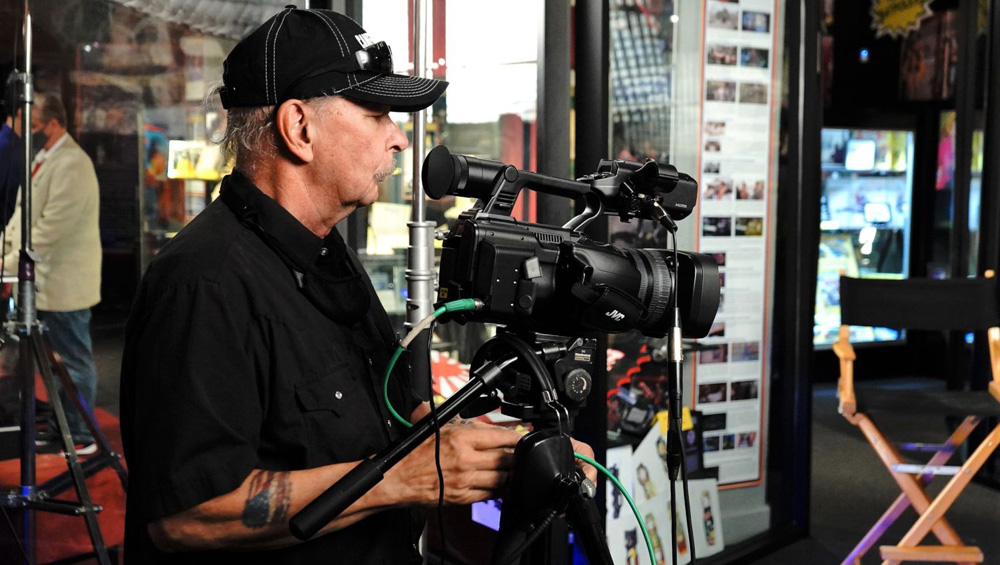
Broadcasters Reach For The ‘Cinematic’ With Their Camera Needs

Broadcasters are capturing cinematic-style video and relying on increasingly sophisticated robotics to help tell their stories.
Shallow depth of field shots, made possible through cinematic-style camera and lens combinations, have found popularity during sporting events. Cameras and lenses are trending toward 4K, UHD and HDR capabilities, and even smaller sizes yet with the same capabilities.
As budget- and pandemic-conscious broadcasters focus on decreasing the number of personnel needed for productions, suppliers are seeing an uptick in the number of requests for remotely controlled pan-tilt-zoom (PTZ) cameras and robotic in-studio supports with growing automation capabilities.
Victor Ha, senior director of marketing and product management, electronic imaging division & cinema and broadcast products for Fujifilm North America Corp., says broadcasters are moving toward large format and cinema-style lensing for certain types of video requirements.
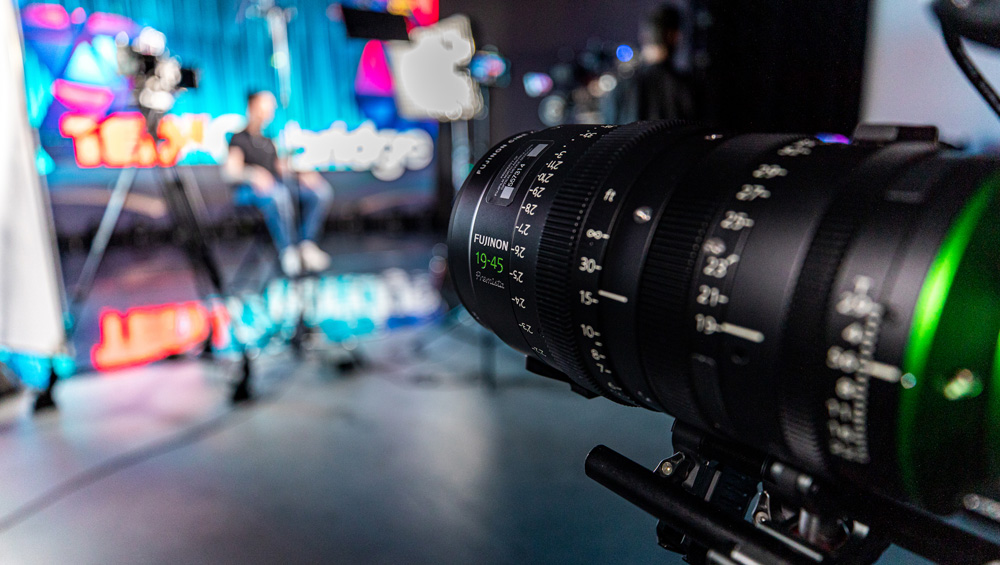
A Fujinon Premista 19-45mm lens in action at the TEDxCambridge XR LED virtual production at Studio Lab. (Photo: Lauren Lyons/StudioLab)
“There’s a real move in the broadcast world to creating images of a cinematic quality,” he says. “Broadcasters lean on providing their audiences with an image that typically isn’t what you’re used to seeing on local broadcasts.”
Shallow Depth Of Field
In this case, the images offer shallower depth of field, which are “aesthetically pleasing,” Ha says. “Audiences love it,” he adds, citing the use of shallow depth of field video captured during the most recent NFL season, which “captured the attention” of viewers.
Josh Stoner, senior product specialist at Canon, notes the company’s CINE-SERVO 17-120mm line of lenses is being used in shallow depth of field configuration.
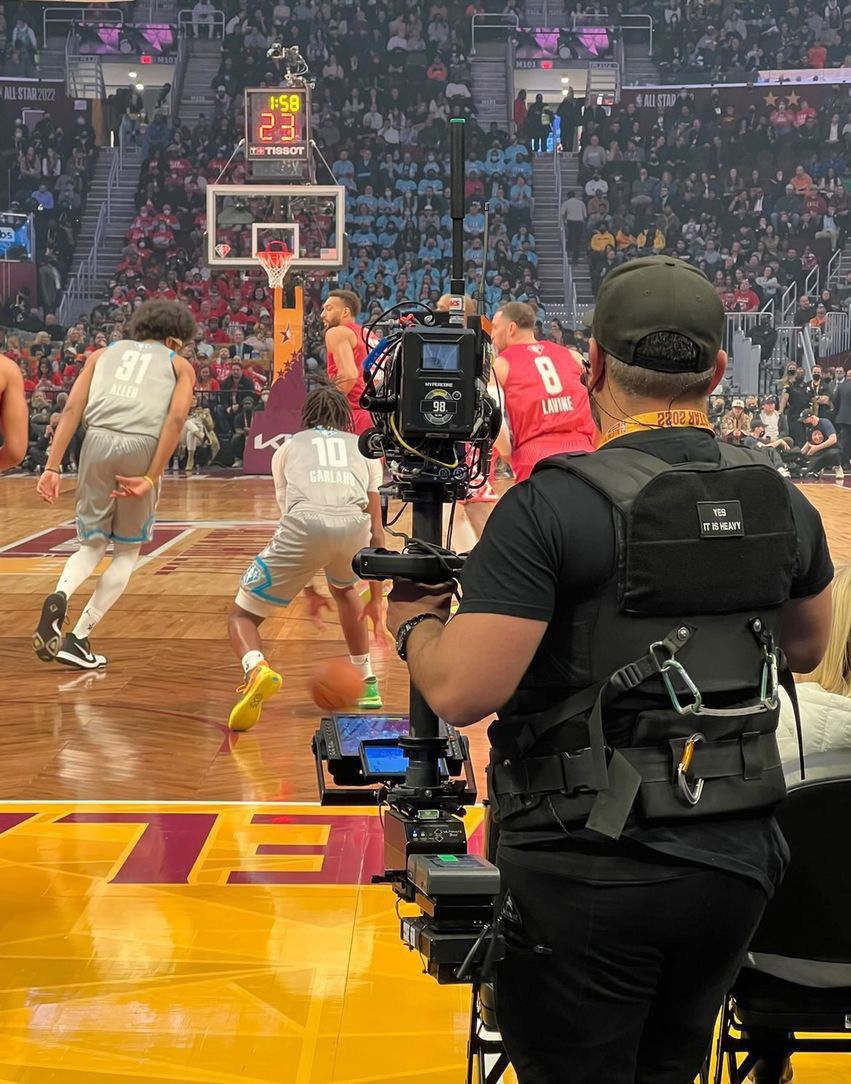
An aerial video systems camera operator uses a Canon EOS C300 Mark III and CINE-SERVO 17-120 rig to capture the action of the 2022 NBA All-Star Game on TNT.
“It is almost built for this shot because of its wide angle and ability to capture the shallow depth,” he says. “We see these lenses in a lot of robotic and virtual systems.”
Ryan Snyder, senior product specialist at Canon, says beyond the trend of broadcasters using large sensor cameras that can create shallow depth of field shots, he is also seeing broadcasters using these large sensor cameras in multi-camera and live system set-ups.
Ha says cinema-style cameras are popping up in broadcast applications, and less expensive cameras capable of providing cinematic quality are entering the market. “As we move toward the need for more cinematic images, there’s also a trend moving toward more smaller format cameras to facilitate that cinematic feel at a more affordable cost.”
Sony Electronics has begun delivery of its new HDC-F5500 S35 camera, which Rob Willox, director of product marketing for media solutions, calls a “really interesting general-purpose camera” that was designed from the outset to be plug and play with a network of other Sony studio cameras.
“It gives that shallow depth of field to talent, sports, concerts,” he says.
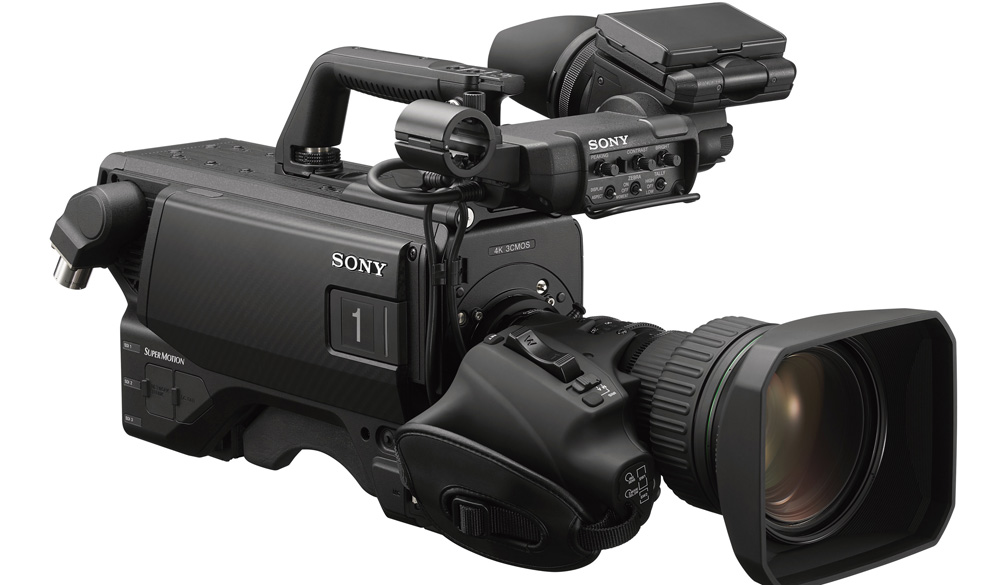
Sony’s HDC-5500 camera
The latest addition to Sony’s line of cameras joins the mid-price HDC-3500 camera, which Willox called “our most popular 4K camera.” The HDC-3500 offers a “great high-definition picture, and you can migrate that to 4K when required,” he says.
NBC Television is using the HDC-3500 camera.
Willox observes the cost of 4K has dropped “quite remarkably.” Many, especially sports broadcasters, he says, are “looking for more K” and want to be able to offer 4K shows.
Higher Expectations
Michael Bergeron, senior category owner for advanced technology and video production at Panasonic System Solutions Co. of North America, says more capabilities are expected out of professional cameras.
“Being able to work high dynamic range (HDR) and 4K is becoming a prerequisite for professional cameras,” he says.

Panasonic’s KAIROS live production platform is a flexible, expandable and low latency IP base switcher that offers an open architecture system for live video switching with input/output flexibility.
Bergeron says HDR is gaining popularity as more monitors that can show HDR become available. “It’s necessary for an HDR workflow to be able to support HDR and standard gamma at the same time,” he says. “Most of our cameras will support simultaneous HDR and SDR at the same time.”
Klaus Weber, principal camera solutions & technology at Grass Valley, says those involved in high-end live production environments like sports are seeking ultra-high definition (UHD) capability in their cameras.
“Three or four years ago, this was not heavily demanded,” he says. “Practically every camera we are selling today is required to have at least a UHD upgrade path.”
Nearly all of Grass Valley’s cameras support UHD requirements, whether that’s 1080p or 4K, SDR or HDR, and more, he says. Formula 1 is shot using Grass Valley UHD-capable cameras.
John Humphrey, VP, business development for Hitachi, says broadcasters can future-proof their purchases and content for ATSC3.0 video delivery by selecting equipment that handles 1080p, 4K and HDR. But even without ATSC3.0, they will see benefits, he says. “If you start with better, it will end up better, even though it’s being funneled through a smaller delivery mechanism.”
Lenses’ Importance
But investing in a camera that supports 1080p or 4K alone is not enough, Humphrey says.

Hitachi’s SK-HD1800 camera in the WSLS Roanoke, Va., studio.
“It’s often the case that people will buy a nice super-duper camera and put their own lens on it, and what they have done is dramatically reduce the performance of the combination of the lens and camera,” he says. “From the perspective of a camera manufacturer, it’s a punch in the face for us to put an old lens on a new camera.”
People are tempted to use older or pre-existing lenses because while “cameras keep getting cheaper and better, lenses keep getting better and more expensive,” Humphrey says.
That’s happening because lenses are mechanical, and they need to be polished and coated, he says.
“The better the glass, the better the picture, period,” he says.
Global shutter is a camera capability that captures images all at once, or globally, rather than sequentially as is done with older cameras that rely on rolling shutters.
“When you capture a picture sequentially like with a rolling shutter, you see different parts of that fast-moving picture at different times. That causes havoc with the output picture,” Humphrey says. “A global shutter captures everything at once, boom, so no matter how fast the image is moving, this dramatically reduces all those problems.”
While they capture imagery without image distortion or flashbanding, global shutters are also expensive.
As Humphrey puts it, the global shutter imager requires more integrated circuitry than a rolling shutter.
“You can’t just change to a global shutter. It’s like going from small CPU chip to a powerful graphics unit,” he says.
Hitachi’s three main cameras use a global shutter, he says.
Trend Toward Smaller, PTZ
Edgar Shane, GM of engineering at JVCKenwood, says broadcasters are trending toward smaller cameras.
“It used to be that everybody carried big cameras on their shoulders,” he says. “Now we see more reporters requesting lighter hand-held models.”
And the new generation of smaller cameras is just as powerful as the former generation, he says.
Shane says the dream is to have a “camera equivalent to the phone, always connected like a smartphone.”
Part of that is the ability to send video over the internet immediately or receive video. JVCKenwood has integrated WiFi into its professional broadcast cameras, making it possible to connect to 5G hotspots and streamline workflows. “Everybody wants to go from the camera to the screen as fast as possible,” Shane says.
Broadcasters also want to minimize the number of people needed to run cameras, so they often turn to PTZ, which can be remotely controlled.
“We’re seeing a stronger demand for PTZs,” says Jim Jensen, senior category owner, PTZ & remote systems, Panasonic System Solutions Co. of North America. “At every angle, someone’s trying to push PTZs to a new limit. They’re being used in so many applications now.”
At next month’s NAB Show, Panasonic will showcase a number of PTZs that are shipping, he says, and new PTZs “will make a debut in a public way.”
Features like full-bandwidth NDI and FreeD capability that were formerly available only on high-end cameras are now appearing on mid-level cameras due to customer demand, he adds. “A lot more demand has been put on the streaming aspect of our PTZ and that workflow,” he says.
The majority of Panasonic’s PTZ line can handle SRT protocol, he adds.
James Eddershaw, CEO of Shotoku USA, says while remote control is not a new technology, it is “hot at the moment” and “came into its own” propelled in part by the need for social distancing requirements associated with the COVID-19 pandemic.
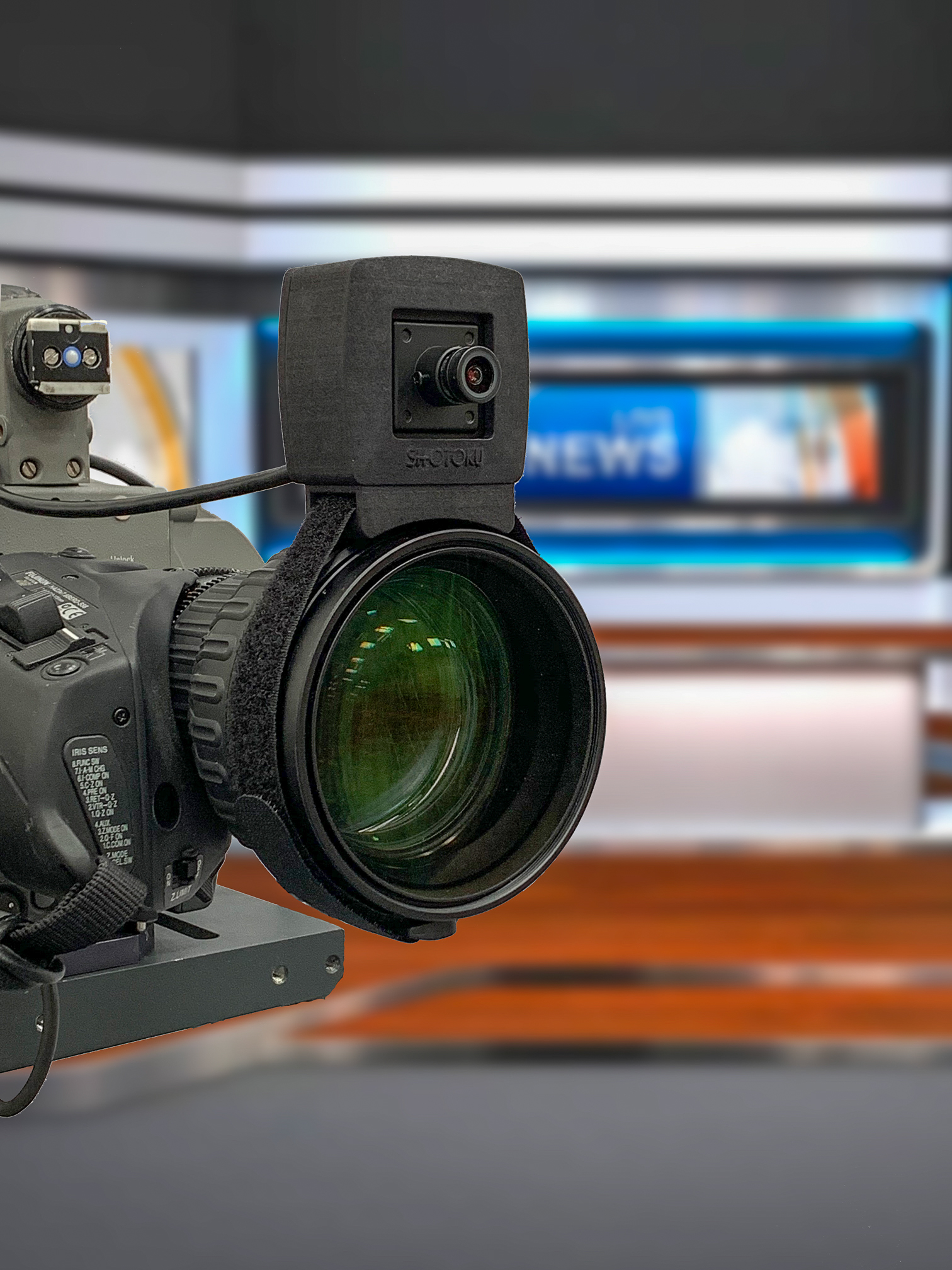
Shotoku’s LiveView commands heads to new positions by touching on a wide-angled live video view.
CBC in Canada, the BBC in the U.K. and Sky Sports all use Shotoku’s equipment to control video equipment across different studios and cities.
“It doesn’t matter to us how remote those set ups are,” Eddershaw says.
More Sophisticated Robotics
But control for cameras extends well beyond PTZ units into the realm of more sophisticated robotics, which can take visuals to a whole new level.
As robotics like rail systems become more affordable for third tier broadcasters, the “top tiers have had to up their game,” says Paddy Taylor, head of broadcast at MRMC. As a result, they are seeking out “faster, more engaging robotics than they would have done previously.”
They are using robotics and motion to tell the story, he says. That includes using robotic arms, which MRMC sold three times more to the broadcast industry in 2021 than the year before, he says.
“These tier one broadcasters are looking to do more interesting visuals,” Taylor says. The robotic arms “create shots you can’t get any other way.”
One MRMC customer has integrated four robotics in four different locations, and those robots work in mirrored forms, transitioning from the head location to local centers via an “interesting sweeping motion,” Taylor says.
The transition is done in a way, he says, that conveys professionalism, and it can’t be done manually because the shot couldn’t be done consistently, as being even millimeters off would affect the quality.
Al Jazeera began using MRMC robotic arms a few months ago to create complex shots in areas where presenters were but they didn’t want other personnel to be, Taylor adds. One is an intro and extro shot of the presenter on stairs, he says.

MRMC’s Polymotion Chat automated camera tracking solution.
MRMC has added a smaller member to its StudioBot family, and it costs less than $100,000, including the robot, the software, installation and training, he says. MRMC is slated to deliver the first StudioBot LT in May.
MRMC’s Polymotion Chat automated camera tracking solution has been updated to offer specific facial recognition, so the software knows which people to track, Taylor says.
And that’s just one more step on the way to the cameras that don’t need to be managed by operators. “Camera automation is the holy grail.”
As Eddershaw puts it, the ultimate is to be able to automatically track faces, without an operator, so if the person moves, the camera will correct for that. This is ideal, he adds, for situations where animated guests are on camera rather than trained presenters.
“It’s great if you can leave the operator to do the important stuff and have the computer track them,” he says.
































Comments (0)